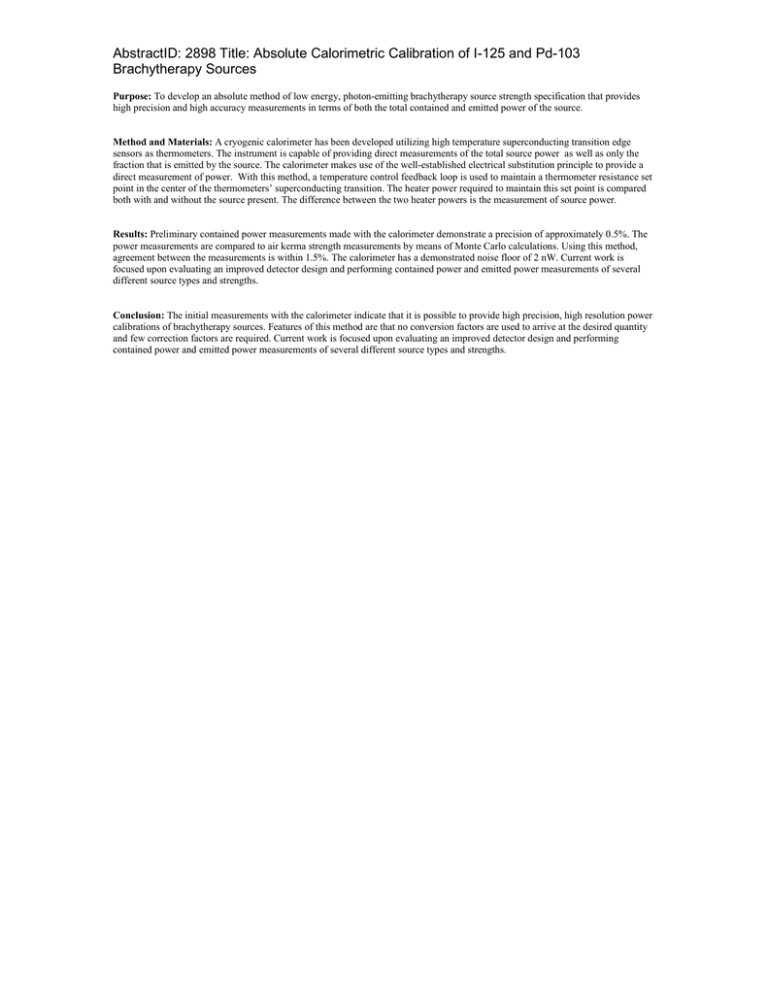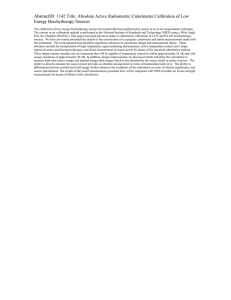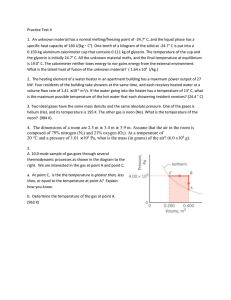AbstractID: 2898 Title: Absolute Calorimetric Calibration of I-125 and Pd-103
advertisement

AbstractID: 2898 Title: Absolute Calorimetric Calibration of I-125 and Pd-103 Brachytherapy Sources Purpose: To develop an absolute method of low energy, photon-emitting brachytherapy source strength specification that provides high precision and high accuracy measurements in terms of both the total contained and emitted power of the source. Method and Materials: A cryogenic calorimeter has been developed utilizing high temperature superconducting transition edge sensors as thermometers. The instrument is capable of providing direct measurements of the total source power as well as only the fraction that is emitted by the source. The calorimeter makes use of the well-established electrical substitution principle to provide a direct measurement of power. With this method, a temperature control feedback loop is used to maintain a thermometer resistance set point in the center of the thermometers’ superconducting transition. The heater power required to maintain this set point is compared both with and without the source present. The difference between the two heater powers is the measurement of source power. Results: Preliminary contained power measurements made with the calorimeter demonstrate a precision of approximately 0.5%. The power measurements are compared to air kerma strength measurements by means of Monte Carlo calculations. Using this method, agreement between the measurements is within 1.5%. The calorimeter has a demonstrated noise floor of 2 nW. Current work is focused upon evaluating an improved detector design and performing contained power and emitted power measurements of several different source types and strengths. Conclusion: The initial measurements with the calorimeter indicate that it is possible to provide high precision, high resolution power calibrations of brachytherapy sources. Features of this method are that no conversion factors are used to arrive at the desired quantity and few correction factors are required. Current work is focused upon evaluating an improved detector design and performing contained power and emitted power measurements of several different source types and strengths.



